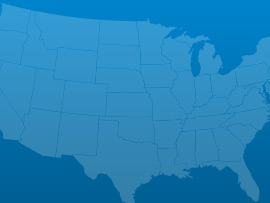D.C.’s drinking water comes from the Potomac River, is treated by the Washington Aqueduct, and is then delivered by DC Water. The system supplies approximately 95.8 million gallons per day of water, equivalent to 145 Olympic swimming pools. The system entails 1,350 miles of pipes, equivalent to driving from D.C. to Chicago and back. The pipes’ median age is 79 years, which is beyond the design lifespan of 50 years, and 9% of pipes were installed during the period between the Civil War and the 1890s. Recently, DC Water started replacing 1% of pipes a year. While 3 times the previous year’s replacement rate, it is still a 100-year replacement cycle. There are typically 400 to 550 water main breaks a year. The system also includes 4 pumping stations, 5 reservoirs, 3 elevated water storage tanks, and 9,300 fire hydrants.
 Bridges
Bridges Drinking Water
Drinking Water Energy
Energy Levees
Levees Rail
Rail Roads
Roads Schools
Schools Solid Waste
Solid Waste Transit
Transit Wastewater
WastewaterA: Exceptional, B: Good, C: Mediocre, D: Poor, F: Failing, ?: Incomplete
Each category was evaluated on the basis of capacity, condition, funding, future need, operation and maintenance, public safety, resilience, and innovation
Bridges
21 of the 252 bridges are structurally deficient
Bridges
$26.1 million in bridge funds came from the Federal Highway Bridge Fund in 2011
Drinking Water
$1.6 billion in drinking water infrastructure needs over the next 20 years
Hazardous Waste
8 sites on the National Priorities List
Inland Waterways
10 miles of inland waterways, ranking it 39th nationally
Levees
2 miles of levees
Ports
100 thousand short tons of cargo in 2012, ranking it 44th nationally
Public Parks
$11.6 million of unmet needs for its parks system
Rail
3 freight railroads covering 19 miles across the state, ranking 49th nationally by mileage
Roads
$425 million a year in costs to motorists from driving on roads in need of repair, which is $1,061 /yr per motorist
Roads
298 of the state’s 1,502 public roads are major roads, and 95% are in poor condition
Transit
418.1 million annual unlinked passenger trips via transit systems including bus, transit, and commuter trains
Wastewater
$2.5 billion in wastewater infrastructure needs over the next 20 years

March 03, 2017
As the President’s repeated in his address to Congress his pledge to dramatically increase infrastructure spending to the tune of $1 trillion, various Congressional Committees

March 01, 2017
On Tuesday night, President Trump addressed a joint-session of Congress for the first time in his presidency. Infrastructure was among the many issues he discussed.

February 28, 2017
U.S. motorists set a new record for vehicle miles travelled (VMT) in 2016, driving over 3.2 trillion miles, an increase of 70 billion miles from

February 17, 2017
Romantic dates, the Grammy awards and celebrating black history are not the only milestones of this week; the Oroville dam crisis in California and the